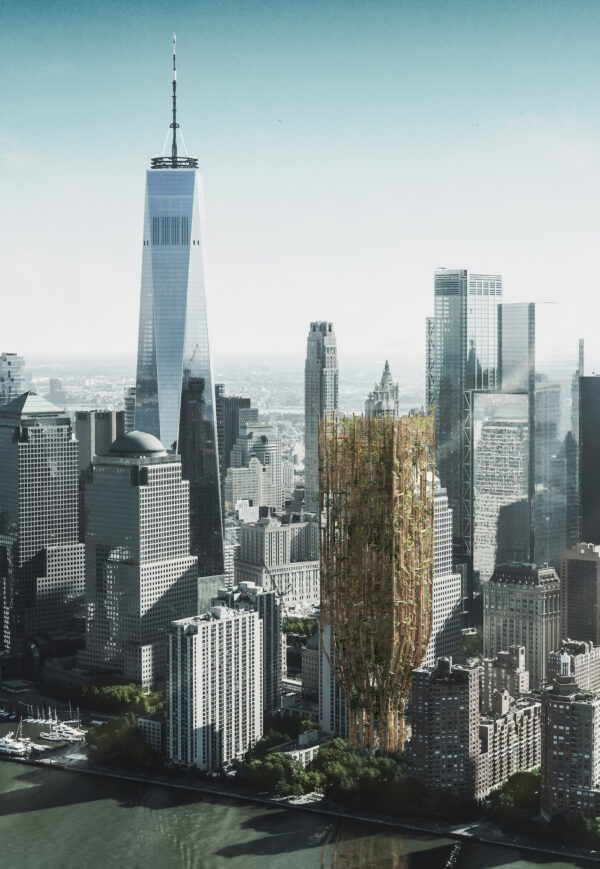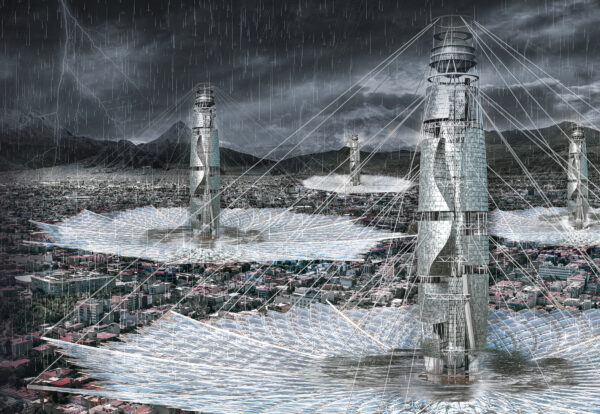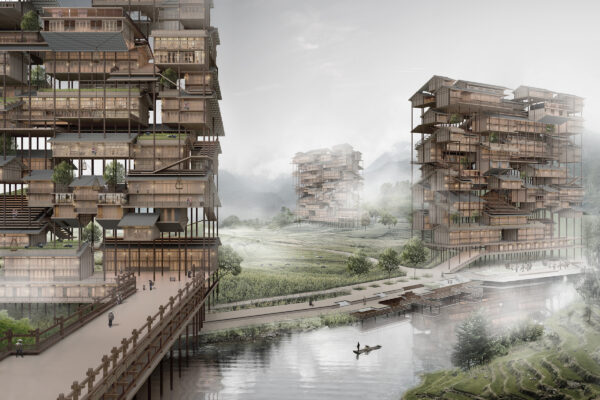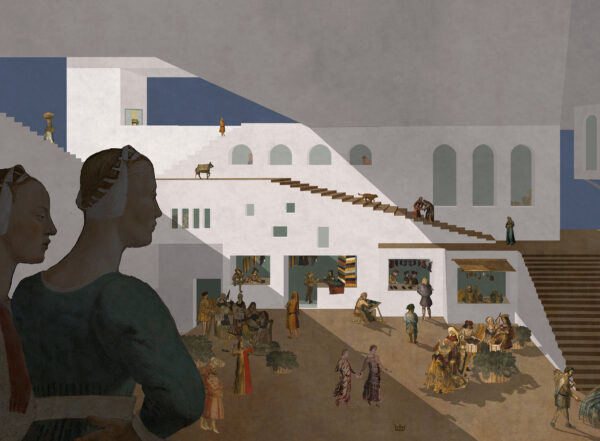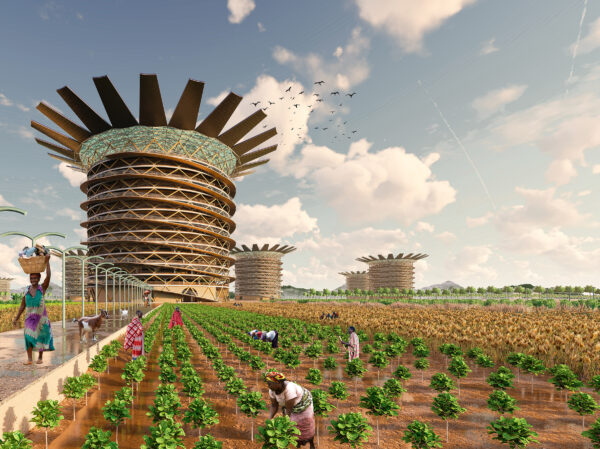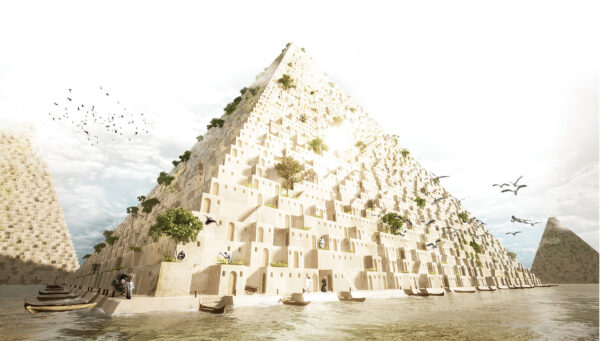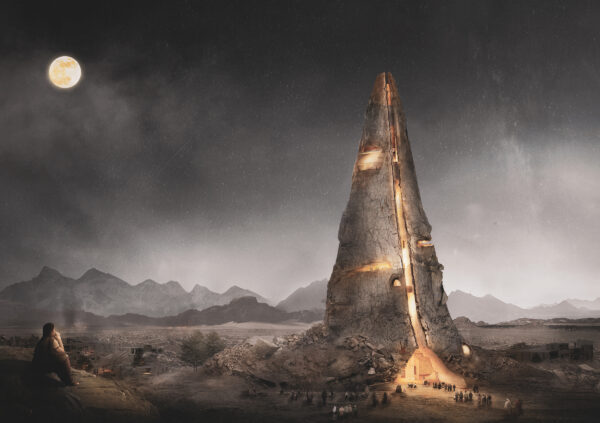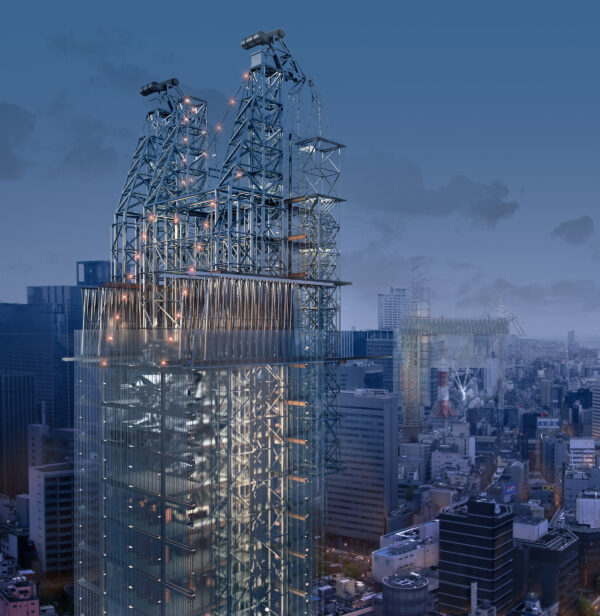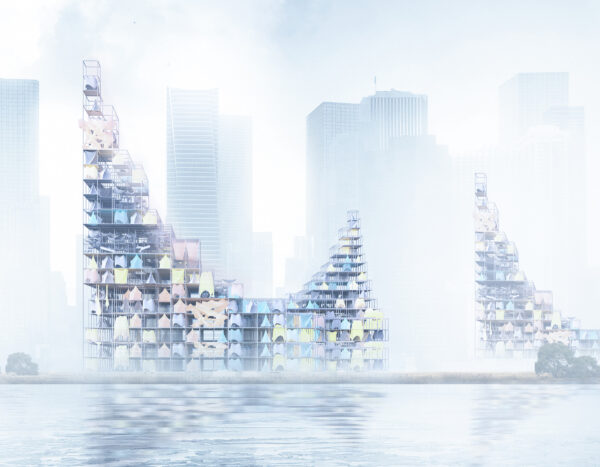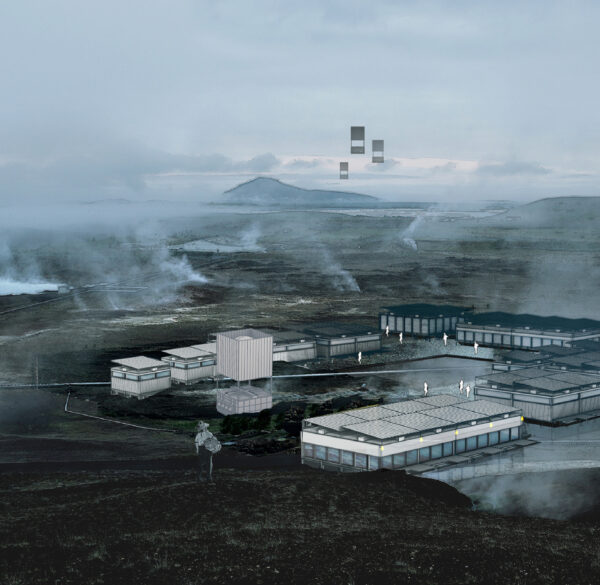First Place
2021 Skyscraper Competition
Andrii Lesiuk, Mykhaylo Kohut, Sofiia Shkoliar, Kateryna Ivashchuk, Nazarii Duda, Mariia Shkolnyk, Oksana-Daryna Kytsiuk, Andrii Honcharenko
Ukraine
One of the main goals of the project is to grow a living skyscraper on the principle of sustainable architecture.
The building will function in the middle of a grey megalopolis and solve a number of important environmental and urban issues. By analyzing the active process of urbanization and a decrease in the percentage of green spaces as a phenomenon that provokes a number of environmental problems.
We believe that by integrating genetically modified trees during the stage of their growth and development into architecture, we can restore the balance between the digitalized megacities and the Earth’s resources, which are gradually depleted.
A skyscraper tree is a separate living organism with its own root system, irrigation, care mechanisms, and features of development focused on its adaptation to use in architecture. It is a group of unique fast-growing and tall hardwood deciduous trees, which are planted in groups in specially prepared soil (to obtain resources) and in the process of their growth from a unique architectural volume.
The plant absorbs water and nutrients, which are distributed from root to tip. At the same time, the growth of the trunk circumference will gradually increase the strength of the wood structure and improve its self-supporting properties. Read the rest of this entry »

